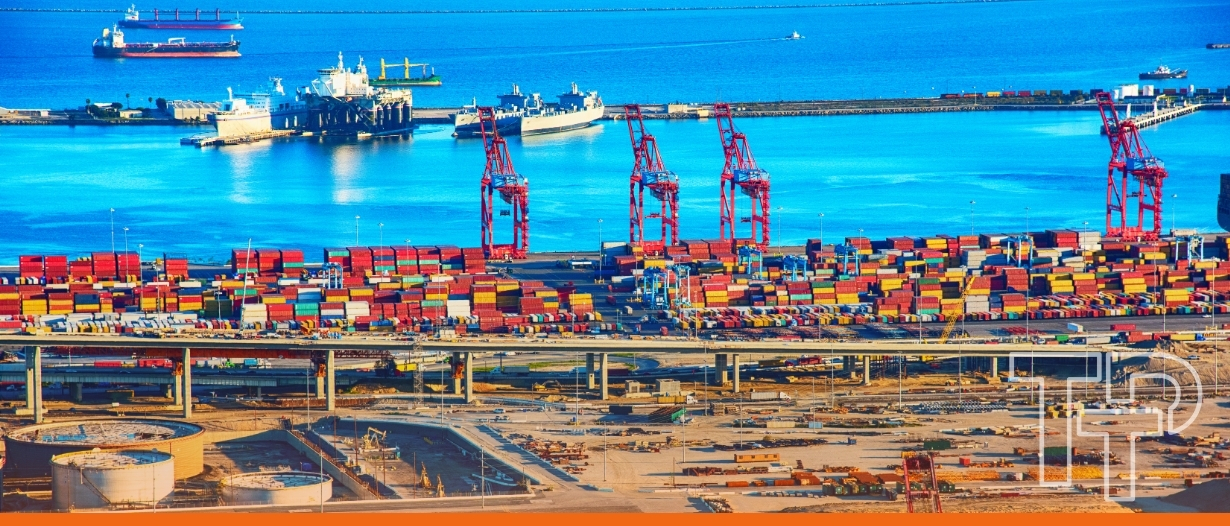Tide implements API-first treasury solution in partnership with Atlar to power global expansion
Devanshee Dave
Jul 01, 2025
 Devanshee Dave
May 12, 2025
Devanshee Dave
May 12, 2025

The maritime landscape of the United States West Coast has entered uncharted territory. Last week, zero cargo vessels left China for California’s top busiest ports, a scenario unseen since the pandemic’s early days. Shipping disruptions occurred during the pandemic, but the current situation stems from a fundamentally different set of economic and geopolitical circumstances.
41 vessels were scheduled to depart China for the San Pedro Bay Complex six days ago, but the number had dropped to zero by Friday. The dramatic decline is a result of President Trump’s recent trade war, which imposed massive tariffs on Chinese imports.
Most goods shipping from China to the United States now face a 145% tariff, while US exports to China are hit with a 125% tariff. The end result is a near-complete cessation of traditional shipping patterns. However, the financial impact extends far beyond simple shipping statistics.
The Port of Long Beach saw a 35-40% drop in cargo volume compared to normal levels. The Port of Los Angeles also experienced a 31% volume decline this week. Additionally, there were zero cargoes at the Port of Seattle.
Maersk, the world’s second-largest shipping line, reports that cargo volume between the US and China has fallen by 30-40% compared to normal, signalling a potential fundamental restructuring of established trade routes.
Mario Cordero, CEO of the Port of Long Beach, warns of immediate and potentially long-lasting consequences. “We’re not just looking at a temporary logistical challenge,” Cordero stated. “This represents a potential fundamental shift in global maritime trade dynamics.”
According to Census Bureau data, in 2024, the Port of Los Angeles was most dependent on Chinese imports, with 51% of its total cargo volume, approximately 22,237,485 metric tons, originating from China. The Port of Long Beach presented an even more pronounced pattern, with Chinese imports constituting 61% of its total cargo volume, amounting to 8,341,200 tons.
China has significant market dominance across multiple sectors in the US. In 2024, the US imported 46% of plastic goods, including household items and personal care products, 46% of residential and office furniture, 40% of electronics, 47% of iron and steel goods, and a whopping 88% of toys and sports equipment from China.
As a result, a tariff-hurt China can cause ripple effects in the US that can extend across multiple stakeholders. With no cargo volumes at the shores, for longshoremen and maritime workers, it means reduced job opportunities. For consumers, it means increased prices. The price increases transcend typical inflationary patterns, signalling a more profound structural realignment of global economic mechanisms.
The reduced cargo business can potentially result in product shortages for critical supply chains. At a broader level, a reduced business for the U.S. ports also results in a disruption of established global logistics networks, hinting at a shift in international trade relationships that is already materialising. For instance, China has increased its exports to other countries.
China is currently in a tight position.
Tariffs pushed China’s factory activity to a 16-month low in April. If the U.S. boycott continues, 2% of China’s GDP could be lost, putting 9 million jobs at risk. However, not all is gloomy for China, as the dragon’s share in the Asian and European Union is increasing.
Southeast Asian markets are China’s top export destination. In April, its exports rose to 20.8%, compared to last year’s modest 11.6% growth. Vietnam and Malaysia are the primary drivers.
Indonesia and Thailand have also seen Chinese shipments surge by 37% and 28%, respectively. Even the European Union saw a 10.30% increase in Chinese imports for April on a year-on-year basis.
However, the US still accounts for a significant part of China’s economy, and it is not the only country to leverage Southeast Asia.
Many US companies are also turning their heads to India, Indonesia, Malaysia, Thailand, and Vietnam. Apple Inc.’s production facility shift to India is one such example, where 98% of the total iPhones this year were made in India.
So, while China can take a breather with its ships trying to cross the tariff ocean as attention shifts to other countries, a de-escalation with the US would still be needed to survive.
Trade representatives from the US and China were set to meet in Geneva over the weekend, hoping to de-escalate tensions. President Trump has hinted towards lowering tariffs to 80%, with final terms to be determined by Treasury Secretary Scott Bessent. While the official’s statements are yet to follow, Bessent has described the meeting with He Lifeng, vice-premier of China, as substantial progress.
As the world watches, the zero-vessel scenario is likely to be a critical moment in international trade. The actions taken in the coming weeks will determine whether this is a temporary anomaly or will impact global maritime commerce.

Devanshee Dave
Jul 01, 2025

Carter Hoffman
Jul 01, 2025
Trade Treasury Payments is the trading name of Trade & Transaction Finance Media Services Ltd (company number: 16228111), incorporated in England and Wales, at 34-35 Clarges St, London W1J 7EJ. TTP is registered as a Data Controller under the ICO: ZB882947. VAT Number: 485 4500 78.
© 2025 Trade Treasury Payments. All Rights Reserved.